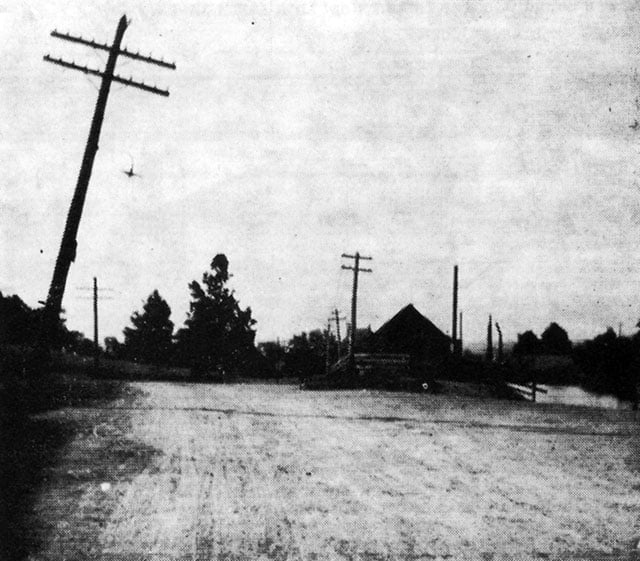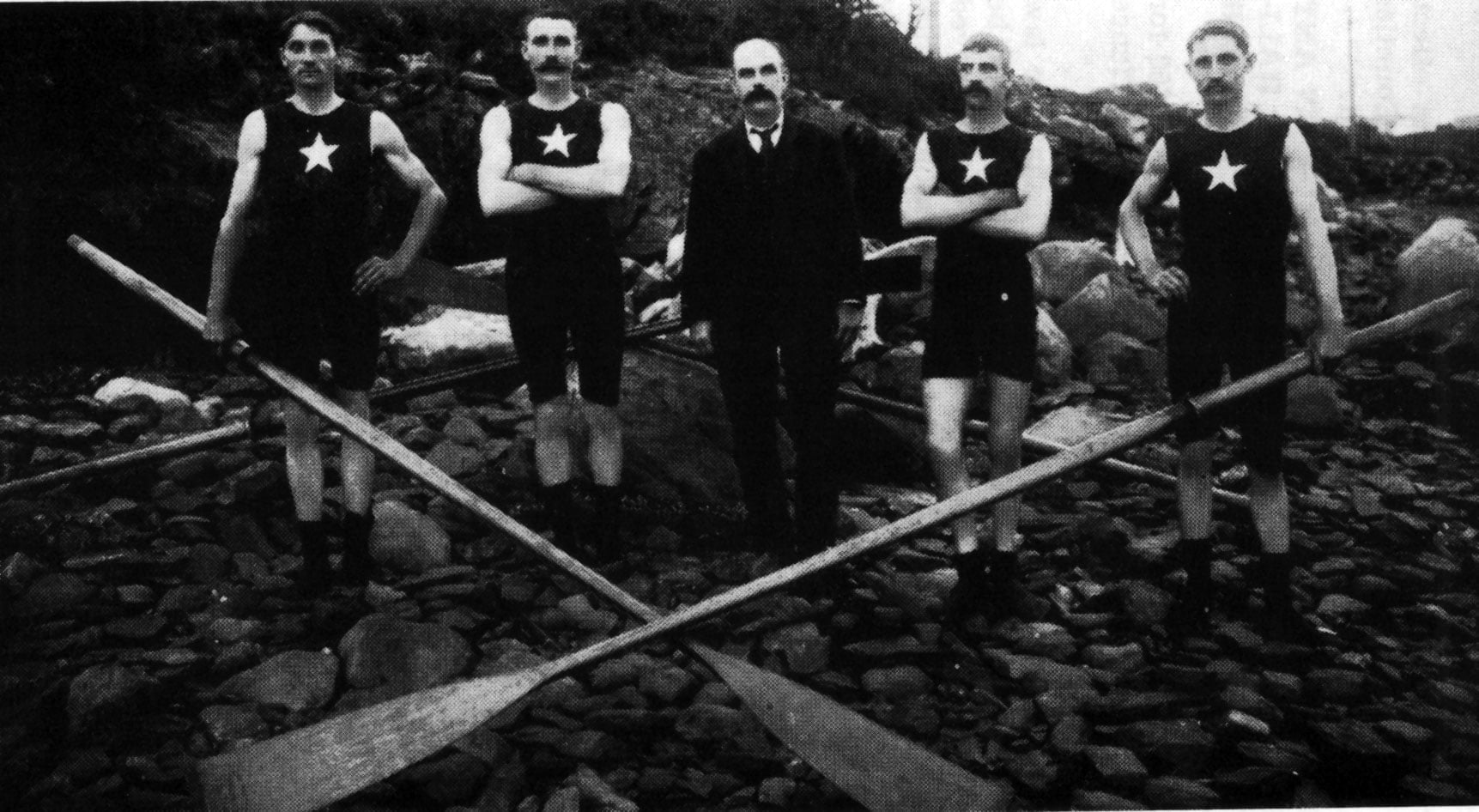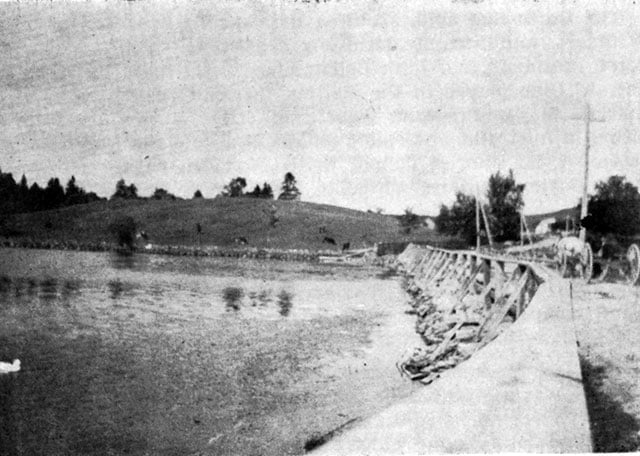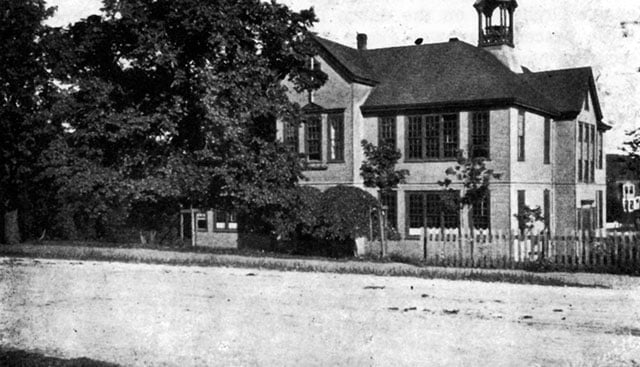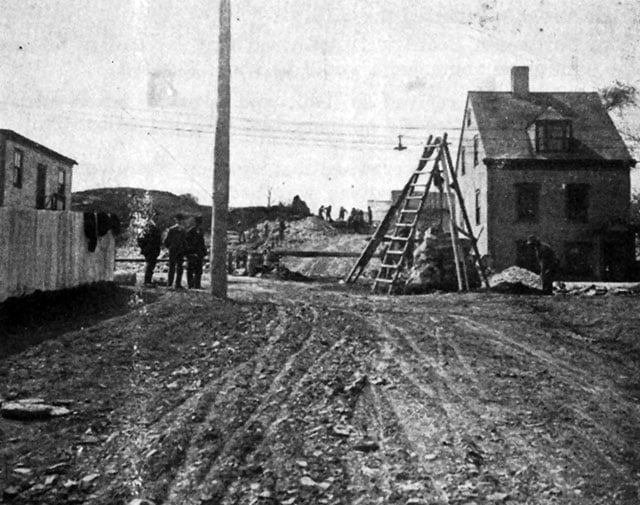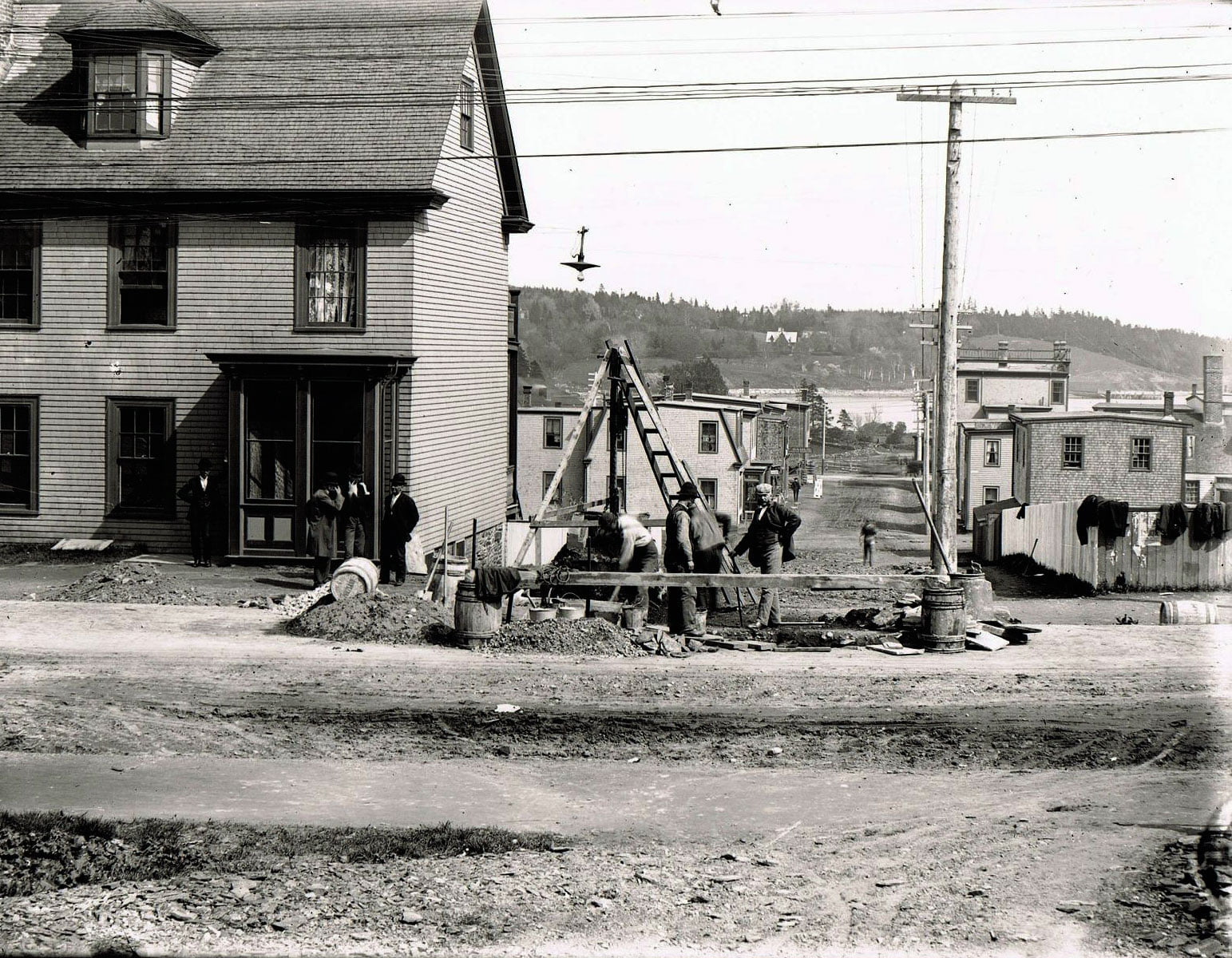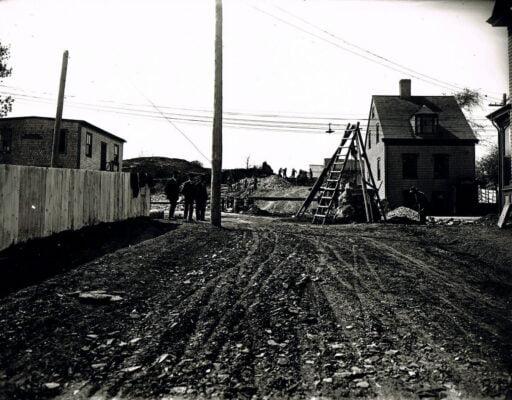From The Story of Dartmouth, by John P. Martin:
A major change in educational arrangements was made by an Act of the Legislature in 1908 when all districts outside the boundaries of Dartmouth were separated from the Town, as far as school accommodation was concerned. Ever since incorporation in 1873, Dartmouth had provided for the education of pupils living in the vicinity of Tufts’ Cove, of Cole Harbor Road and of Woodside. Residents of these places then paid school taxes to the Town, and general taxes to the County. The new Act authorized the organization of the Woodside-Tufts’ Cove School Section, having its own Board of Trustees. The County subsequently purchased from the Town of Dartmouth the two school buildings in these areas. The price paid was $7,435.
Dartmouth councilors unsuccessfully opposed this bill in the Legislature because they held out hopes of bringing Woodside into the Town in future years and because Dartmouth had then just begun to receive a substantial school tax from the Sugar refinery after a long period of exemption. It was said at the time that difficulty arose from the circumstance that Dartmouth assessors were assessing property in the County by the same yardstick as they used in the Town. The result was that Dartmouth assessment values for school rates in the County sections were nearly twice as high as the values levied by the County assessors. The sugar refinery naturally sought the cheaper governing body.
Down at the ferry, some sweeping changes were made in commutation tickets. For instance, the family ticket of $3 per month was abolished completely. It was pointed out that some families comprised ten or twelve persons who were thus crossing at a ridiculously low rate, while adult transients paid a straight five-cent fare. The rate of 67 cents per month for women, and of 84 cents per month for male minors, went up to $1.00 each. For adult males, the price remained at $1.50. The rate of 34 cents a month for domestic servants, a relic of the past, was also abolished. In that year, Charles A. Hunter succeeded Henry Watt as Ferry Superintendent. He had been on the boats some 10 years.
One of Captain Hunter’s first assignments was the transporting of nearly 8,000 passengers who crossed over on the boats for the Natal Day celebrations on July 30th. Many came in the morning to witness the finish of the first modified Marathon race from Halifax to Dartmouth via Bedford and Burnside. Hans Holmer won.
Enthusiasm for boat racing was at its height during the rowing season of 1908, for it was the year of the Olympic games. The 4-oared shell crews of St. Mary’s, North West Arm and North Star Clubs held contests in June, and finished so closely together every time, that all three were sent to the Canadian trials in St. Catherine’s, Ontario. At that place, the final winners were the Argonaut four of Toronto.
At Dartmouth on Natal Day, the North Stars easily capture the senior shell contest. At the Lorne Club regatta they broke a oar, and were out of the race. At Springfield Mass., on August 14th St. Mary’s crew won the straightaway championship of America On August 22nd, the North Stars defeated St. Mary’s and three other crews at the Arm regatta. Finally on Labor Day, the North Stars again won the Maritime Championship, and set a new record of nine minutes for the 1 ½ mile course. One length behind then came the second North Star entry of Curren brothers, Faulkner and Keddy. St. Mary’s, Lornes and Arm crews followed in order.
On summer evenings an amateur baseball league attracted crowds to the Chebucto Grounds, which was then unfenced. I: autumn there would be four or five tug-of-war tournaments held in the wooden rink. Athletic organizations then active in Dartmouth included the D.B.C.A., Banooks, Centrals, North Stars, St. Peter’s, Mount Amelias, Dartmouth Harriers, and Woodside Club.
Supervisor of Schools Ernest W. Robinson terminated his Dartmouth engagement in June, and was succeeded by William C Stapleton. Like his predecessors he taught the Grade IX class until one o’clock. After dinner he had numerous other duties.
During the year 1908, the water and sewerage system to the north-end was practically completed. A new stone-crusher operated by water-power was set up on the Walker property, just north of Findlay’s Pond on the location of the present Tourist Bureau. A granite curb and the first piece of concrete sidewalk were laid a’ Sterns’ corner. In the matter of health, there was another mild smallpox scare when some 40 slight cases were quarantined. In addition, about 28 houses were placarded for diphtheria.
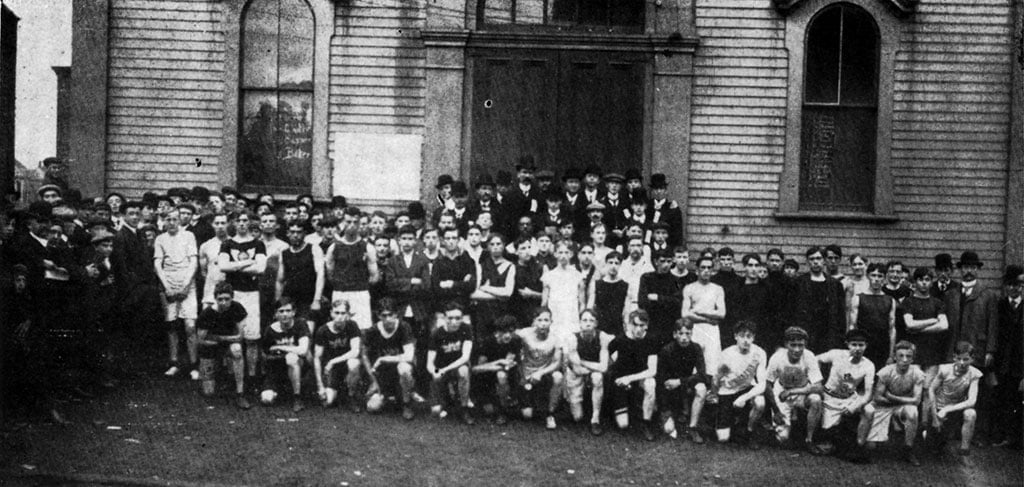
Here are 60 Halifax and Dartmouth runners at the DBCA Hall ready for the Williams Cup race around Woodlawn on Thanksgiving Day 1908. The tall man with the beaver hat at the door, is Mayor Notting. On his right is Stephen Myatt, and then James Tobin. Left of the Mayor are G.P. Monohan, H.R. Walker, H.W. Hewitt, Ross Day. A hand is on Harry Young’s shoulder. Down from him is Aldred Rodgers dressed in white, and with arms folded. He won the race. At Rodger’s right is James Martin, then A.C Pettipas, then the third next runner wearing sash is Harry Smith. At Rodgers’ left is J.J. Myatt, then Albert Downey who was second. D.R. Patterson is kneeling second from left. James Renner in bowler hat, is at extreme left. Crowds of spectators were lined along Ochterloney Street.

